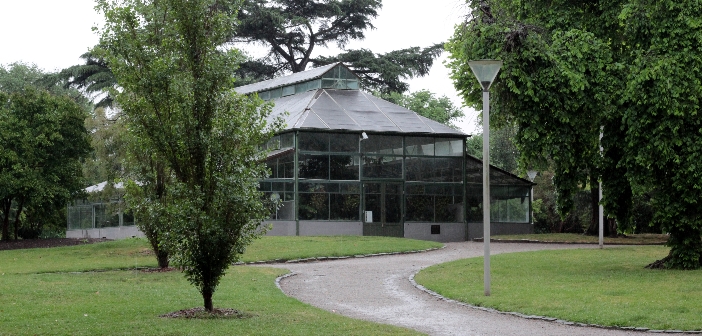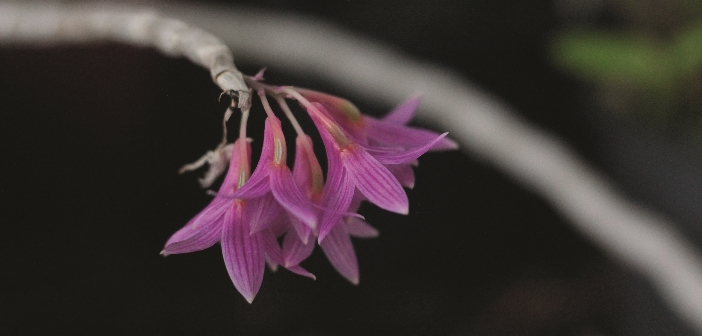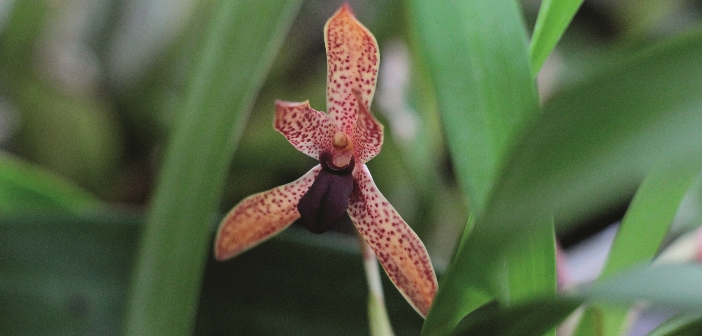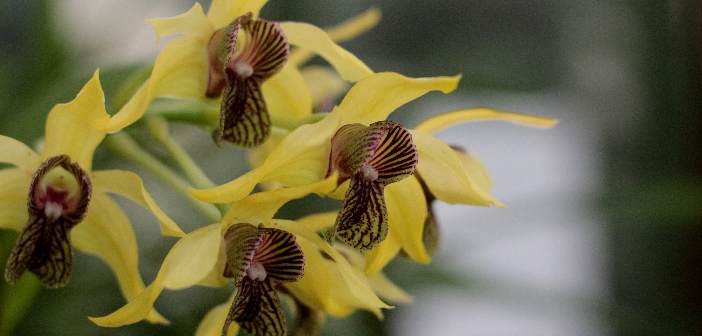John Varigos isn’t just interested in orchids – he’s obsessed. Kate Jordan talks to this avid plant collector about orchids and what they can tell us about the world.
In 1976, John Varigos’ wife Barbara changed his life forever by suggesting they visit the new Chadstone Mall. Next to the mall was a Melbourne Eastern Orchid Society show, which Barbara proposed they take a look at – and John was completely blown away.

“I wasn’t involved in gardening at all, it wasn’t my forte, but I thought the orchids were magic,” John remembers. “I bought a couple of the plants.”
The next day, a chance encounter further sealed John’s fate. When popping down to the local corner store, he noticed some orchids in the furniture shop next door. Although the shop was closed, John could see the owner inside and knocked on the door.
“We started chatting and he invited me around to his house. He gave me a few more orchids and encouraged me to join the local society and that was it; the beginning of the end.”
Fast forward 40 years and John now has a collection of more than 500 orchid species. John is a self-described ‘Orchidholic’ and his wife has forever regretted the trip to Chadstone.
It’s easy to see how orchids can get addictive. John is a species collector rather than a hybridist; he’s more interested in orchids in their natural form, rather than breeding big, colourful (but sadly scentless) flowers. With more than 25,000 species of orchid currently identified and new ones being discovered every month, there’s always something new to discover, but acquiring new orchids can be a challenge.

“Before the 1970s, it was free game; everyone could just go to the jungle and collect. A lot of New Guinea stuff came in at that stage,” John recalls.
“A lot of my orchids would have been brought in before the new regulations came in the 1970s”.
In the 1970s, however, Australian border control became tighter and Papua New Guinea gained independence from Australia. While the Papua New Guinea jungles are now a very limited source of orchids, others come in from all over the world, provided they do so in the approved manner via specialist nurseries or approved channels.
Orchid species collecting is, however, about more than just getting the rarest plants or building up the largest collection – or at least it is for John. He’s passionate about what orchids teach us about the world. Orchids come from every country and can tell us a lot about evolution, history and environmental crises.
Every orchid species has its own pollinator, be it a bee, wasp, ant or some other small insect. Each species has developed to attract their special pollinator, whether through an enticing scent, delicious nectar, or mimicking a female pollinator – the last of which is called ‘pseudocopulation’.
“Many Australian orchids are very into pseudocopulation,” John explains and then jokes: “They promise the world and don’t deliver – typical females.”
The specialisation of orchid pollinators provides a wealth of examples for evolutionists to draw upon – the most famous of which being Angracecum sesquipedale (Comet Orchid) from Madagascar. At the back of the comet orchid is a nectary – a long tube with nectar at the bottom – with a small hole at the front of the flower for the pollinator to stick its tongue through.
“This is a very famous orchid in the annals of Charles Darwin. He never went to Madagascar, but he was shown a picture of the comet orchid. He said somewhere in the forests of Madagascar there must be a very big moth with a very long tongue because otherwise, why would an orchid waste all that energy growing this long nectary? Everyone poo-pooed him and said that was garbage. Many years after he died, they discovered the moth,” John explains.

While some orchids reveal their secrets easily, others are more close-lipped. Near the comet orchid is Dendrobium harveyanum, with hairy yellow petals – and botanists are yet to work out why they are so hairy.
Orchids’ exclusive relationship with their pollinators also highlights the impact that the destruction of native forest can have. John gives two examples, the first being a near miss close to home.
Down near Portland, Victoria, there’s an orchid known as Caladenia hastate of which there are four left in the wild.
“The forest has been destroyed so badly that the pollinator no longer exists. So now they go out there every year and hand pollinate those orchids,” John says.
Further afield, there has been total destruction, as is the case with Epidendrum ilense.
“Some botanists from Missouri Botanic Gardens discovered this orchid in the forest and took it back to America to identify it. By the time they got to identify it, that forest had been destroyed, the whole valley had been bulldozed. So those four plants that they happened to take out, were the sole survivors.”
It is only collectors like John – who has an example of Epidendrum ilense in his glasshouse – that are keeping the species alive.

Some of John’s orchids live at his home in East Malvern, but the majority are housed nearby in the historic Central Park conservatory. The conservatory could almost be a story in and of itself. Shipped over in pieces from Europe in 1927, the glasshouse has stood in the Central Gardens for more than a century. In the 1990s, it fell into such disrepair that it was condemned. The local council decided the building was too important to lose and set about restoring it, but failed to find an interesting collection to match the conservatory’s past – until, that is, they were approached by John.
“We lived in Armadale for 30 years and I had a large glasshouse there. Once we decided to downsize and move into East Malvern, I had to find somewhere to relocate my orchids to,” John explains. “We ended up purchasing a place near Central Park and were walking the dogs here when I saw the conservatory. It was full of boring plants such as impatiens and I thought, we can do better than that.”
John spoke to the council and they were delighted. John’s orchids now occupy the entire north-facing annex and half of the southern one. His friend Paul, who specialises in stanhopea orchids, has the other half of the southern annex. The central part of the conservatory is still full of the council’s plants.
“My aim eventually is to take over the whole conservatory with orchids and make it a bit of a tourist attraction, for people who want to see orchids in Melbourne. It could be an adjunct to the Botanic Gardens, which doesn’t have any orchids on display,” John says.
The layout of the conservatory, with plants in the annexes facing outwards, ensures the public can view the plants even when the conservatory is locked.
For those looking to find out more about orchids, John recommends Googling the name of the nearest town or city alongside the words ‘orchid society’. Most Australian cities have local orchid societies that are looking for new members to share their passion with.
The main benefit of joining such a society is gaining access to knowledgeable orchid specialists that can offer advice specific for the local environment, but there are also other benefits.
“They’ll get access to plants at a cheaper price too, rather than go through commercial nurseries. And they’ll get access to plants that are not commercially available,” John says.
But buyer beware – these orchids are addictive!




